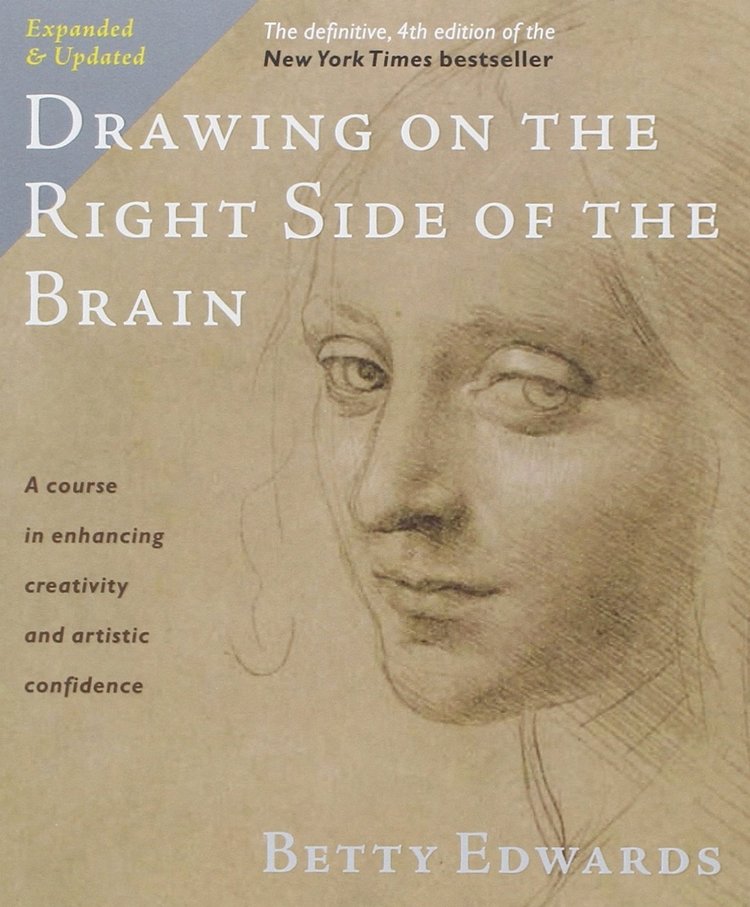Readers and fans of Drawing on the Right Side of the Brain, Arthur Grant and Neve Spicer, wrote this fascinating article for our blog on a subject Betty has long advocated. If you want to remember something you see or experience…draw it! Thank you, Arthur and Neve, for this great contribution to our website.
We've known for a while that drawing exercises the brain in different ways from reading and writing. But did you know that drawing may actually make it easier for a student's brain to retain information? New psychological research suggests that this may be the case, and offers a deeper insight into how we learn and remember.
In 2018, psychologists Myra Fernandes, Jeffrey Wammes, and Melissa Meade of the University of Waterloo ran an experiment with various groups of younger and older adults to discover the relationship between drawing and memory. Fernandes, Wammes, and Meade's work showed that people who draw words from a list are twice as likely to remember them later than if they had just written them down. It doesn't matter how much artistic talent you have, or whether it's just a quick doodle. Even a few seconds of sketching seems to make something easier to remember as compared to traditional note-taking.
For more in-depth detail on the researchers' work, you can find their original article here.
So why does it work? The researchers think it's because the act of drawing creates multiple mental connections to the word or concept. First, you have to make the mental effort to translate the concept into an image, followed by the physical effort of directing your hands and eyes to create the drawing. And once the drawing is created, the part of your brain that interprets pictures gets in on the act, translating the picture back into the original concept. By involving all these different parts of your brain in the process, you increase the likelihood of the information being retained.
Another possible reason is that drawing requires a person to take an active role in acquiring and depicting the information, instead of just passively stuffing concepts into the brain or jotting down a list. An actively engaged brain is more receptive and less likely to wander or tune out.
For teachers, drawing can provide a better way to help students remember what they learn. In particular, students who do poorly with traditional classroom reading, note-taking, and memorization may benefit from being allowed to draw instead.
There are many potential class projects that can allow students to exercise their drawing skills in service of learning. Making posters, diagrams, or comic strips to illustrate course concepts is a fun alternative to essay-writing. For more complex concepts, students might even enjoy creating their own sketchbooks or comics. Giving kids drawing and other creative prompts to create class journals in place of the traditional notebook can also get them interested in different ways to record and present information. You can even include drawing prompts and challenges on assessment materials.
And don’t forget that using drawing to boost memory isn’t just a classroom thing. You can use it yourself:
Need to call your mom? Draw a picture of her in the morning.
Want to be kinder to yourself? Draw a representation of this each day.
Trying to improve your body posture? Draw yourself walking straight and tall.
Can’t forget to pick up some milk? Draw a cow or make dairy-related sketch.
Just remember, whether it’s you, your children or students, keep drawing fun. There’s no need to evaluate or criticize this sort of free-form creativity. Drawing to remember is all about quick creativity and a jot of effort.
It need only take five minutes, but this habit may just improve your memory while adding a moment's joy to your day.
Arthur is a child play theorist, creative educator, and father of three. As chief editor for Muddy Smiles, he advocates for (loads) more play and creativity within education and at home." Why Muddy Smiles? To quote them: “Childhood – like it’s meant to be – involves three key ingredients: play, toys, mud. That’s why we exclusively write about play, review toys, and suggest a ton of muddy activities for children.”

